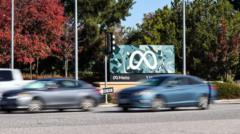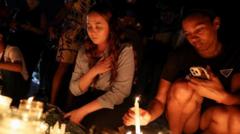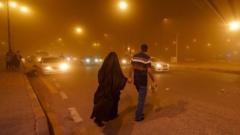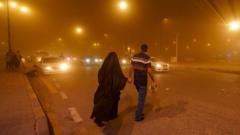In the aftermath of two major wildfires that devastated Los Angeles on January 7, investigators are examining various theories, including arson and utility failures, while the community seeks clarity on how these tragedies began.
Investigating the Origins of Destructive LA Wildfires
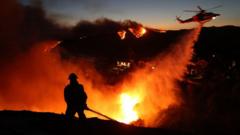
Investigating the Origins of Destructive LA Wildfires
Authorities probe multiple theories as communities demand answers following devastating fires in Los Angeles.
The hiking trail through Temescal Canyon in western Los Angeles has transformed from a beloved escape into a charred landscape, surrounded by police tape and labeled a "crime scene." This area may hold critical evidence regarding the origin of the catastrophic fires that ravaged multiple neighborhoods in the region. Meanwhile, investigators are also focusing on the Altadena community, struck by another destructive blaze originating from the San Gabriel Mountains.
As officials comb through burned wreckage for clues, anxious residents are left questioning the fires' origins, which remain uncertain. Speculation has run rampant, with accusations directed toward arsonists, utility companies, or the possibility that a previous, extinguished fire reignited due to strong Santa Ana winds reaching up to 100 mph in the following days. Investigations hinge on evidence from burn patterns, security footage, and eyewitness testimony following the fire on January 7, which resulted in 27 fatalities and over 12,000 destroyed structures.
"It's just too early," stated Ginger Colbrun from the US Bureau of Alcohol, Tobacco, Firearms and Explosives (ATF). Community members eagerly await answers, yet the investigation is complicated and could take as long as a year.
Witness accounts are critical, including those of Kai Cranmore and his friends, who were hiking the Palisades trail that fateful morning. Their video footage captures the initial signs of smoke, quickly escalating to flames. The hiker's experiences have drawn scrutiny online, amplifying the existing fear of blame amongst those caught in the chaos.
As the Palisades fire flared up, questions arose regarding its relation to a smaller fire that had occurred in the same area days earlier. Fire Chief Anthony Marrone expressed skepticism about the theory that the earlier fire reignited, although he confirmed that investigators are also exploring the possibility of arson with multiple unofficial accounts pointing toward that angle.
On the other side of the town, the Eaton Fire led to widespread destruction in Altadena, killing at least 17 individuals. Eyewitness Jeffrey Ku documented the fire's early moments as it erupted below a towering metal utility pole. This specific infrastructure is now under intense scrutiny as utility companies, notably Southern California Edison, face renewed accusations linked to past wildfire catastrophes.
While Southern California Edison maintains that no equipment malfunction occurred prior to the fire, lawsuits are already being filed against the company. Investigators remain focused on the potential role of the utility tower in the fire's ignition. Although investigations are ongoing, authorities continue to stress the need for caution before assigning blame, having learned the consequences of incorrect accusations all too well in the past.
As these inquiries unfold, both affected communities and fire prevention officials demand accountability and transparency in a dire situation underscored by California's continuing struggle with wildfires.













